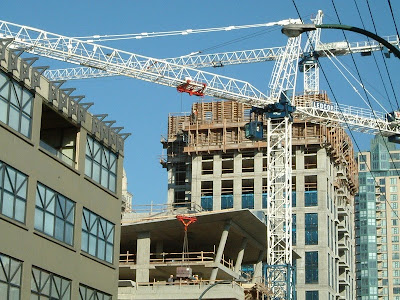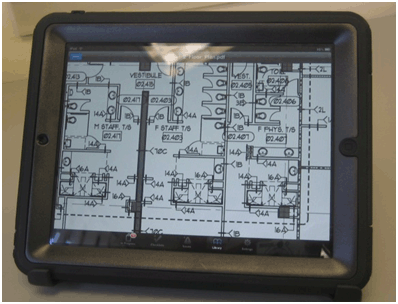
It may be 2011 before population growth and job creation push existing construction projects and distressed assets through the system. Only then will apartment owners, investors, and developers be able to reap the benefits.

iPads are being used in the construction industry. My employer has purchased iPads for all field staff. A major benefit is the ipad’s ability to link to virtual plan rooms through the web and access all project drawings, contracts, specifications, project schedules, RFIs, submittals, purchase orders, correspondence, contacts, photos, etc. The iPad improves productivity for supervisors and craftsmen. The iPad on project sites, dramatically reduces the need to carry 50lb contract drawings and specification manuals around the jobsite. Cost savings is another benefit of using the ipad due to reduction of job printing required for a project. In addition,a green initiative may be launched based on the paper savings, providing better customer service.
The National Association of Home Builders (NAHB) has urged policymakers to address the lack of financing for housing production that is impeding the housing and economic recovery.
Homebuilders are in for a rough few years now that the home buying tax credit era has ended.
The Chief Executive from D.R. Horton Homes believes 2011 and 2012 are going to be tough years. He quotes "I just don't see any sustainability of growth or profitability until we get some jobs created in this country and until consumer confidence improve. D.R. Horton is by far the most aggressive in cutting prices from all homebuilders.

June 2010 contracts for future commercial construction in the Dallas-Fort Worth-Arlington Metropolitan statistical fell 51 percent when compared to June 2009, according to McGraw-Hill Construction.
Not all projects, though, are moving forward because the numbers still aren’t working. Developers looking for financing are running up against lenders that are still underwriting to very conservative metrics.
According to Milam, lenders are underwriting deals for garden-style apartments at a $2.40 to $2.60 per square foot range. High rises may go for as much as $3 per square foot. He advises these numbers are doable, but only if the land hasn’t traded in a while--specifically since 2006. "Anyone who purchased land after 2006 paid too much for it," he says.
"The price was likely based on condo outsales and the numbers just won’t work. Banks won’t underwrite a deal with rents penciled in at $4.50 per square foot, which is what land at those prices will require." Developers holding onto land from that time will have to wait at least five years before the underwriting and project costs meet at an acceptable point.
Due to the Gulf Coast oil spill, the governor of Florida wants commercial and residential real estate values to be re-appraised to calculate the loss in property values. The governor wants BP to pay for the decline in real estate values.
No comments:
Post a Comment